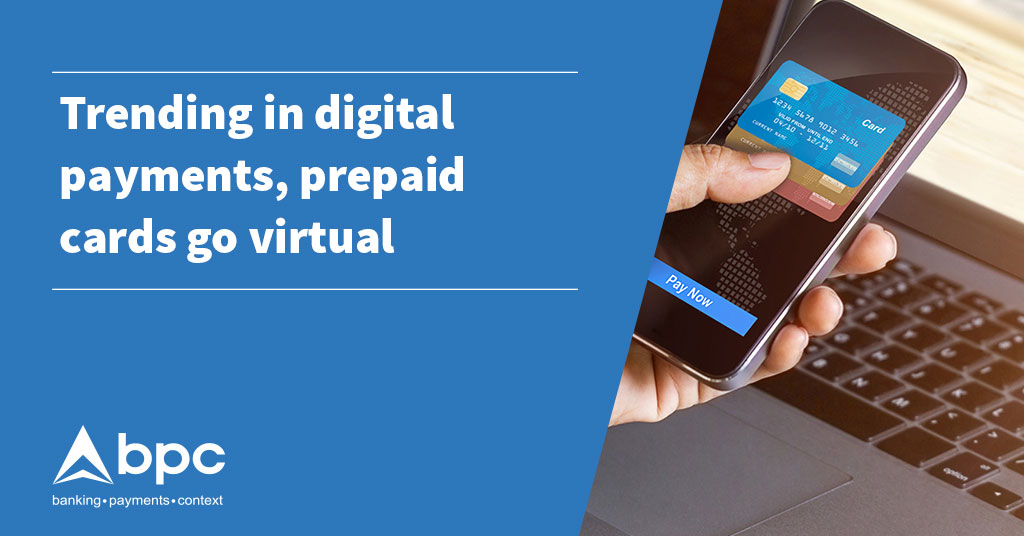Trending in digital payments: Prepaid cards go virtual

Experience seamless, efficient and customizable ATM management
End-to-end, secure, and integrative payment solutions
A white-label, user-friendly platform for secure, versatile payment solutions
Engaging employees to learn, improve and master BPC solutions
Robust fraud detection, risk-based authentication, and multi-institutional security
Streamlining payments and enhancing merchant experiences with seamless solutions
Streamlining and securing multi-network transactions while enhancing efficiency
Deliver hyper-personalized experiences with BPC AI
Operate seamlessly with large data sets, source documents, and generate insightful reports with BPC AI Virtual Assistant.
From enabling banks to enabling banking
The building blocks for next gen banking delivered today
Global banking fit for local needs
Stack to Service - white label payment excellence
More and Better Together
Mass transit the personal way
Enhancing the real life of citizens
Mass transit the personal way
Connecting payment rails to the last mile
Creating relevant industry-led ecosystems
Integrate our APIs on your apps.
The latest developer docs, including tutorials, sample code, and API reference.
Experience seamless, efficient and customizable ATM management
End-to-end, secure, and integrative payment solutions
A white-label, user-friendly platform for secure, versatile payment solutions
Engaging employees to learn, improve and master BPC solutions
Robust fraud detection, risk-based authentication, and multi-institutional security
Streamlining payments and enhancing merchant experiences with seamless solutions
Streamlining and securing multi-network transactions while enhancing efficiency
Deliver hyper-personalized experiences with BPC AI
Operate seamlessly with large data sets, source documents, and generate insightful reports with BPC AI Virtual Assistant.
From enabling banks to enabling banking
The building blocks for next gen banking delivered today
Global banking fit for local needs
Stack to Service - white label payment excellence
More and Better Together
Mass transit the personal way
Enhancing the real life of citizens
Mass transit the personal way
Connecting payment rails to the last mile
Creating relevant industry-led ecosystems
Integrate our APIs on your apps.
The latest developer docs, including tutorials, sample code, and API reference.

Parents use them to empower their children, corporates use them to pay employees, governments use them to disburse payments and benefits. But unlike regular debit or credit cards, prepaid cards come in a variety of guises and operate on a different fee structure.
According to Edgar, Dunn & Company research, the global prepaid card market will reach $3.7 trillion by 2022. While prepaid cards have witnessed a surge in popularity thanks to their ease of use, they have evolved beyond the initial premise of gifting.
Generally associated with unbanked populations, prepaid cards became widespread in the ʼ90s through their use as a single-purpose gift card. Since they are not associated with a bank account and do not require a full KYC process to be performed, they can be anonymous.
The prepaid card works in the opposite way to a card linked to an account works in that the value is stored on the card and not in a bank account. They are consumer-conscious (exceeding the limit is impossible unless the card is reloadable) and can be used as an alternative to a debit or credit card when a cardholder has a poor or no credit history, or for one-time use with a specific purpose.
Consumers use them as a gift instead of cash or when traveling or shopping online, but prepaid cards are not just consumer products. Businesses are increasingly turning to them to manage expenses incurred by employees or pay suppliers, while governments are using them to disburse subsidies or health benefits.
The use of virtual cards has grown exponentially. According to Yahoo Finance, the virtual card market was worth $85 billion in 2015. In 2018, that had risen to $160 billion and by 2024 it is predicted that the virtual card market will be worth more than $500 billion.
Known as virtual cards which can be topped up through an e-wallet or single use accounts when used for online shopping as a security measure, virtual prepaid cards have moved to smart devices driven by mobile and wearable adoption and the push for digitisation and customer convenience.
Consumers and businesses appreciate the greater control, convenience and security compared to the plastic version. Virtual cards protect purchasers from potential debt or interest charges and provide a frictionless payment experience, as consumers can use tap-and-go functionality at the point of sale using their mobile, smartwatch or wristband at an event, making it unnecessary to present a plastic card. Funds are loaded exactly as needed or are easily topped up. For financial institutions, the move from physical cards to virtual prepaid cards represents a step forward in terms of customer experience and security, as well as revenue generation.
Technology has made it possible for banks to automate the issuance of e-cards in volume for single or top-up use. Beyond the bank generating the card numbers, the white label component of the technology empowers third-party businesses to independently issue cards to their own customers or partners in line with security and compliance standards.
Customer acquisition
For banks, automating the issuance of virtual prepaid cards supports the acquisition of new customers in volume. Banks are able to issue cards for customers who did not have one before or where a historical credit check could not be performed. Users of virtual prepaid cards are experimenting with a bank’s services, giving the bank a chance to cross-sell or upsell its services.
Cost reduction
Because virtual prepaid cards are fully automated, the cost of printing physical cards and delivering them to customers is removed, resulting in economies of scale and increased efficiency for financial institutions.
Customer experience
Virtual prepaid cards associated with digital wallets make it possible to immediately make purchases online or in-store. Their ease of use is a key factor in their success. By 2021, virtual card spending is expected to surpass that of traditional purchasing cards. In the next chapter, we will look into the mechanism of prepaid cards and how they can work for your financial institution.